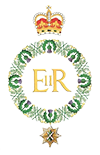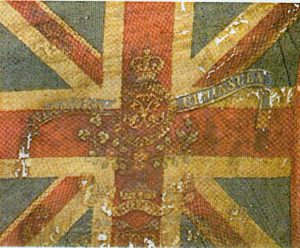
The Kings Colour
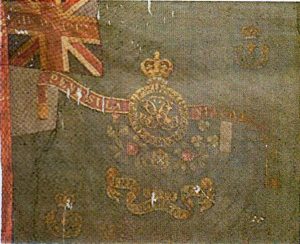
The Regiment Colour
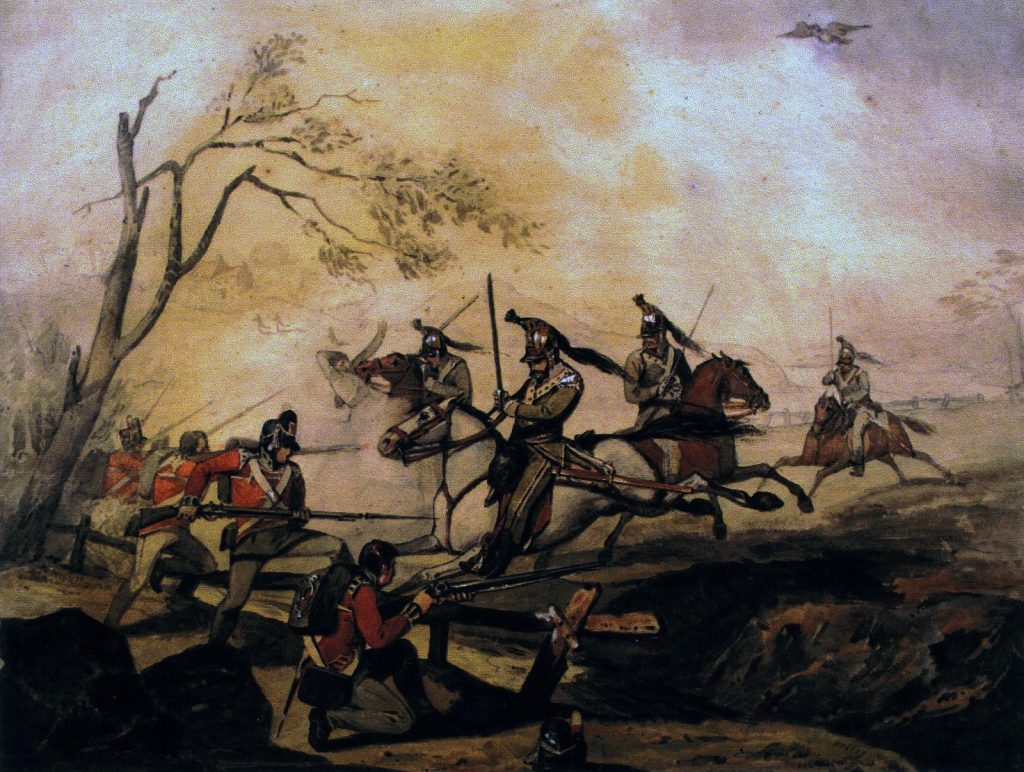
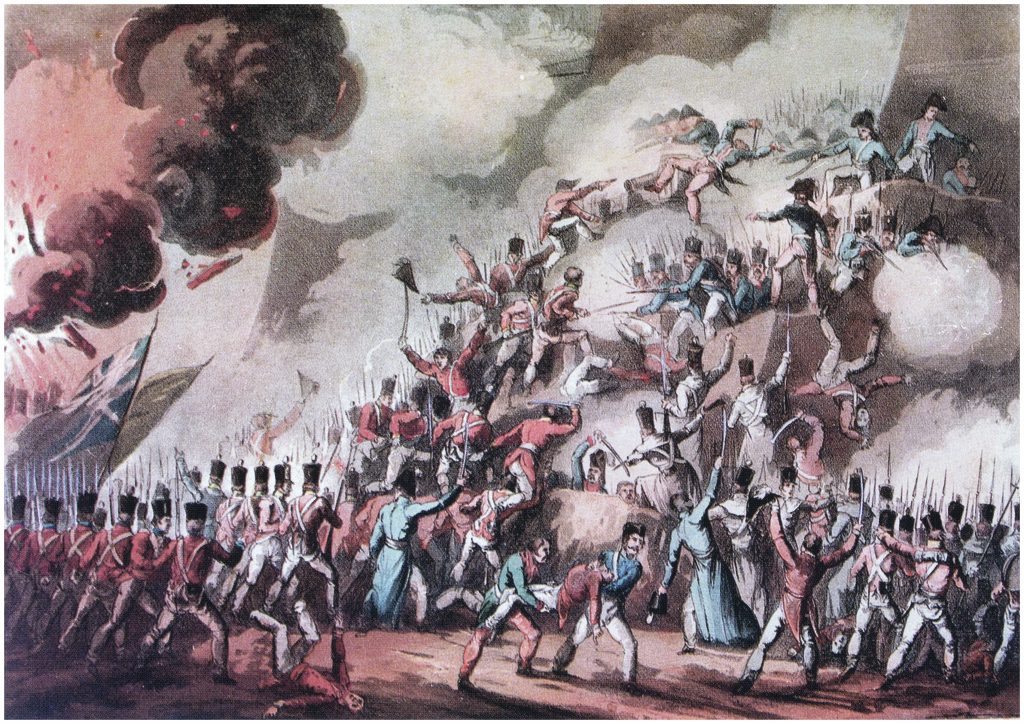
the last probably being the greatest single feat of arms in the long and distinguished history of the Regiment. The Battalion, numbering some 1,000, in twice storming breaches in the walls, the second time successfully, suffered a total of 530 killed and wounded. On 7 October 1813 the Battalion were the first British troops to cross into France, where they gained the further Honour of NIVE. After the defeat and exile of Napoleon to Elba, the Battalion, in 1814, was the last to leave France, marching back into Spain and sailing from there to Cork in Ireland . In 1815 the Battalion was awarded the Campaign Honour PENINSULA.
In April 1815, after Napoleon’s return to France, the Battalion sailed to Ostend and were quartered in Brussels until 16 June when they were ordered to Quatre Bras where they played a major part in halting the French advance and forcing them to battle at Waterloo on the 18th where, again, the Battalion was fully engaged. During the Battle four Officers and the Sergeant Major (RSM) fell carrying the King’s Colour.
The fourth of the officers, Ensign Kennedy, aged 15, was killed, after being wounded for the second time, in advance of the Battalion line. A Sergeant, whose name is unknown, went forward to recover the Colour but could not release Kennedy’s grip on the Colour pike.

He therefore lifted Kennedy onto his shoulder and carried the body and the Colour back into the Battalion’s line. The French Commander opposite was so impressed by this act of gallantry that he chivalrously ordered his troops not to fire on the Sergeant. The Colour was then carried by Segeant Major Quick until he too was shot ‘through the heart’. Between Quatre Bras and Waterloo total losses, killed and wounded were 363 (almost 60%) from a strength of 624. The Battalion was subsequently awarded the Battle Honour WATERLOO.
After two years on garrison duty in northern France the Battalion returned to England and was disbanded at Canterbury on 24 April 1817 but the Colours, still judged to be serviceable, were passed to the 2nd Battalion who had been stationed in India since 1807. During their time with that Battalion they took part in operations both in India and Burma ‘earning’ three more Battle Honours; NAGPORE (The Royal Scots are the only British Regiment to have been granted that Honour; MAHEIDPORE (originally spelt Maheidpoor); and AVA (Burma) – taking the total to ten won under this set of Colours. The Colours were ‘retired’ back to Scotland in 1827, when the 2nd Battalion were presented with new ones, and subsequently laid up in St Giles Cathedral, Edinburgh where they remained until 1934. In that year, due to their fragile state, they were returned to Regimental care. In 2015 they were displayed in The Great Hall of Edinburgh Castle as part of the Waterloo 200 exhibition, where they were seen by over 500,000 visitors. As a result, the decision was taken to carry out some refurbishment and they are now on permanent exhibition in a Napoleonic and Waterloo display within The Museum.
In the period 1815-17 three Battle Honours, WATERLOO, PENINSULA and NIAGARA were added, in paint, to both the King’s and Regimental Colours. The detail on WATERLOO is described as ‘in ornate yellow lettering with two strands of laurel above and below the Honour. To the left of the central Collar a scroll (blue on the King’s, red on the Regimental) with PENINSULA in gold letters and similarly on the right, NIAGARA’. The latter had been won, as a Campaign Honour, by the 1st Battalion in the War of 1812-1815 against the United States.

There can be few, if any, Colours still in existence which saw or reflect so much action in such important campaigns and battles over such a key period in Europe’s and the then known World’s history. The Colours are three times the size of those carried on parade today. You cannot but admire how the average, mostly teenage and much smaller, junior officers of those days carried them, and were often killed while doing so, through the heat, shot, shell and sheer terror of the battles, often lasting a full day, of that time.
